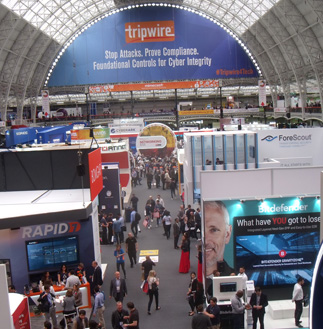More than half (59 per cent) of respondents to the latest social media poll by the exhibition Infosecurity Europe 2019 believe that an attack on the UK’s critical national infrastructure is likely this year.
As more devices, systems and infrastructure are connected to the internet, the cyber and physical worlds are becoming increasingly linked, opening up new attack vectors. The online poll also suggests that organisations in all sectors are not properly prepared to manage security effectively across both cyber and physical environments. Lack of collaboration and low levels of awareness of key legislation are the biggest problems, it’s claimed.
Over two thirds (68pc) of respondents say the security teams in charge of their physical and cyber infrastructures never collaborate. This disconnect leads to misaligned plans and conflicting priorities, while creating ‘silos’ that make it difficult for CISOs to gain full visibility of controls and risks across both IT and OT (Operational Technology) environments.
“Defending critical assets is a team sport,” says Nigel Stanley, Chief Technology Officer and global head of OT cybersecurity at TÜV Rheinland. “IT, physical and OT teams need to get their act together and start to share and learn from each other.”
Kevin Fielder, Just Eat’s Chief Information Security Officer, says: “The increasing convergence of cyber and physical environments is inevitable, but managing them in a cohesive way will strengthen enterprise security.” According to Kevin, it’s the insider threat that needs most urgent attention. “Those intent on accessing money, information or IP will often find it easier to do so from the inside – and we’re moving to a world where this can mean immediate impact to life. Hacking a building’s management systems, for example, could suppress a fire alarm or sprinkler system, or prevent people leaving.”
Only 16 per cent of respondents were aware of the European Union-wide NIS Directive – which covers the security and resilience of network and information systems – and its implications. The NIS sets out security requirements that apply to operators of essential services and digital service providers (DSPs). Failure to comply could leave security gaps that present attackers with ‘open doors’ through which they can access infrastructure and physical assets. UK organisations found to be non-compliant can be fined up to 17 million euros.
“I can’t believe that any cyber security leader in a sector impacted by the NIS Directive would be unaware of its implications for their business,” says Nigel Stanley. “Lack of commitment to secure critical infrastructure is the worst sort of negligence. Forget what the regulators demand – organisations should take the initiative and secure assets based on a proportionate cyber security and business-led risk assessment.”
Kevin Fielder believes that if the industry doesn’t take the lead, further regulation will follow. “It really is in our best interest to self-regulate and protect the public. If the industry doesn’t produce connected devices that are, by default, secure and manageable over the long term, it won’t take many real incidents for government regulations to quickly materialise.”
Victoria Windsor, Group Content Manager at Infosecurity Group, says: “The security challenges resulting from the convergence of physical and cyber environments will take centre stage at Infosecurity Europe 2019 – and for good reason. Operational systems in every industry are being connected to corporate and cloud environments, and the safe ‘air gap’ between IT and OT no longer exists. Cyber risk is now impacting the physical realm, and organisations must have effective management strategies in place. Technology such as unified threat management tools has a role to play, but it’s also vital that teams collaborate and communicate to understand blended cyber-physical attacks, and develop joint approaches, plans and policies.”
Attracting 12,100 responses, the Twitter poll ran during the week of February 4. Infosecurity Europe also asked CISOs about the challenges presented by the increasing convergence of cyber and physical domains, and how security can be managed in a cohesive way.
Infosecurity Europe, now in its 24th year, runs at Olympia, west London, from June 4 to 6. Visit https://www.infosecurityeurope.com/. Pictured; last year’s show floor.









